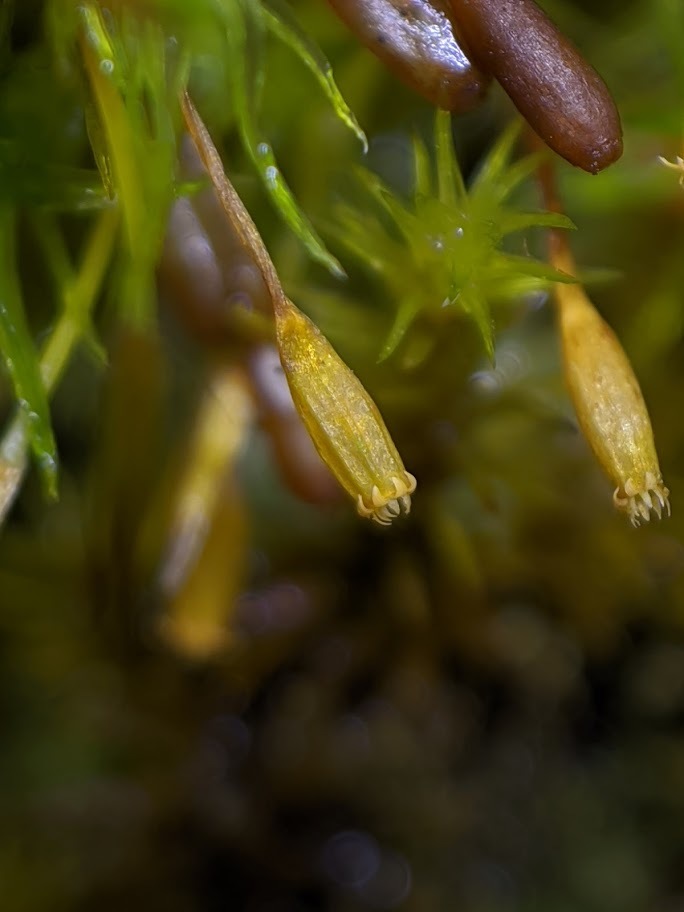Lewinskya tasmanica var. tasmanica
Asexual propagules absent. Loose tufts on shrubs or trees or rarely on non-calcareous rocks, olive-green, bright green or yellow, 10–30 mm tall. Stems orange- to red-brown, with abundant brown rhizoids toward base. Leaves wide-spreading, sometimes squarrose when moist, crisped and contorted when dry, lanceolate to ovate-lanceolate, 1.7–3.7 mm long, 0.35–0.85 mm wide, carinate; apex acute or acuminate; costa subpercurrent; margin entire, slightly undulate, recurved, without a border; laminal cells in apical half isodiametric to short-rectangular, 5–18 μm long, 7–13 μm wide, with simple or branched papillae, unistratose, gradually transitioning into basal cells; basal laminal cells rectangular to rhomboidal, 20–70.5 μm long, 5–14.5 μm wide, nodose, unistratose, smooth. Seta 4–7 mm long, yellow, smooth, not twisted or slightly twisted anticlockwise. Calyptra plicate, usually hairy. Capsules erect, long-exserted, cylindric-ovoid, 1.2–2.5 mm long, straight, yellow to greyish brown, strongly ribbed in upper half. Peristome double; exostome teeth 8, recurved when dry; endostome segments 8. Operculum rostrate from hemispheric base, 0.2–0.6 mm long.
GleP, VVP, VRiv, GipP, OtP, Gold, CVU, GGr, NIS, EGU, WPro, HSF, HNF, OtR, Strz, MonT, HFE, VAlp. New Zealand. Widespread along and south of the Great Dividing Range occurring in a variety of vegetation types including sclerophyll forest, rainforest, riparian forest and subalpine woodland.
 Spinning
SpinningLewinsky-Haapasaari, J.; Ramsay, H.P. (2006). Orthotrichum. Flora of Australia 51: 218–224.
